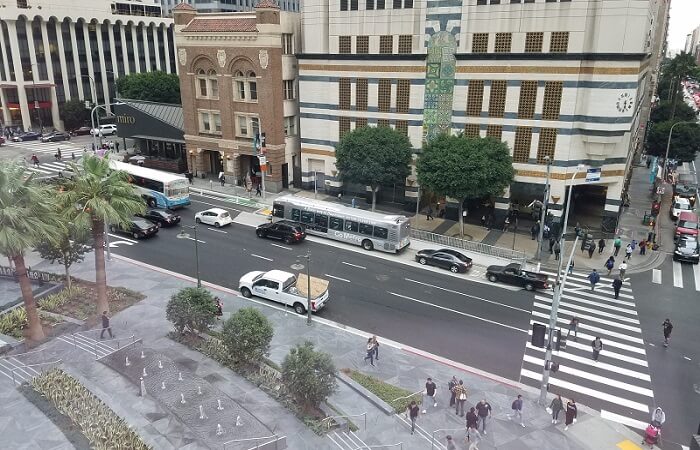Coveting the Curb
A dynamic piece of urban real estate is seen in new light.
A dynamic piece of urban real estate is seen in new light.

Historically “the curb” has not been viewed as important or a desirable place to be. And yet, in today’s transportation world, the lowly curb is an increasingly valuable piece of real estate. The curbside can be used as a bus stop, a place to store bikes or scooters, a freight delivery zone, a taxi stand, a sidewalk café, a parklet or a rain garden. For many jurisdictions the curb has been a reliable source of revenue through parking fees, and often its use is of elevated interest to building owners and tenants.
New mobility services by transportation network companies (TNC) such as Uber and Lyft, and the coming promise of automated vehicle fleets, bring a new set of complexities and demands on curb space. As I look out my office window in downtown Washington, D.C., I am at the epicenter of what is often referred to as mobility as a service or mobility on demand. I can see a bike docking station, dockless bikes and electric scooters, food trucks, freight deliveries, TNC pick-up and drop-offs, traditional taxis and buses, and travelers coming in and out of two different Metro stations. There are plenty of cars and pedestrians too. In this context, the curb is where mobility meets access and passengers turn into pedestrians, and vice versa.
While this wide range of just-in-time travel options benefit me as a traveler, they also create new challenges for city officials and transportation professionals who are trying to manage and integrate these options within tight space constraints. There are a host of transportation planning, design and operations, safety, system integration, accessibility and equity questions to be considered.
Is there room along the curb for passengers to be safely picked-up and dropped-off? Do illegally parked vehicles or bikes and scooters stored at the curb compromise traffic flow and restrict passage for the disabled? Should the curb lane be reserved for buses? Are there other safety hazards for travelers based on how the space is being used?
The recently released Curbside Management Practitioners Guide from ITE provides best practices for curbside management and implementation based primarily on the outcomes of tested strategies. It presents a framework and toolbox for analyzing and optimizing the curbside with the aim of prioritizing and maximizing community values and safety. Managing the curb requires analysis of uses and interactions on both sides of the curb.
In conjunction with the guide, three case studies also were released, for San Francisco, Washington, D.C. and Toronto, Ontario. The case studies highlight efforts to achieve a balanced use of public curbside and demonstrate how private and public entities can work together to facilitate dynamic use of the curb. In addition to the Curbside Management Practitioners Guide and case studies, ITE is working on a followup project that provides resources for curbside analysis.
Hopefully, from now on when you hear the word “curb,” you will not think of a lowly place but a dynamic spot coveted by many that plays a critical role in the safe and efficient operation of our cities.
With a century-long legacy, the National Safety Council is a global center for safety expertise. Let's work together to align resources. We look forward to learning about ways we can join efforts to expand safety everywhere!
There are no items in your cart